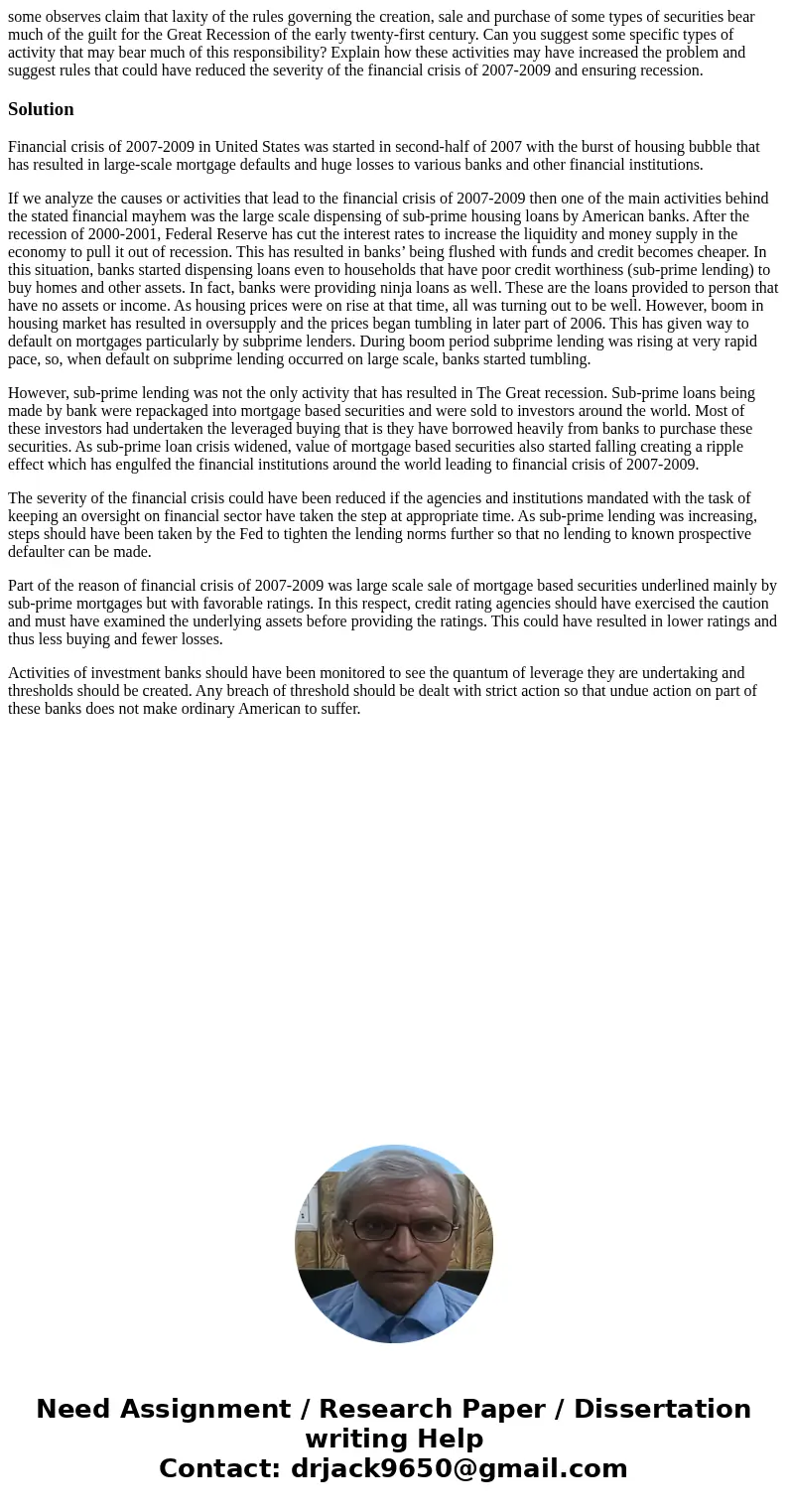some observes claim that laxity of the rules governing the c
some observes claim that laxity of the rules governing the creation, sale and purchase of some types of securities bear much of the guilt for the Great Recession of the early twenty-first century. Can you suggest some specific types of activity that may bear much of this responsibility? Explain how these activities may have increased the problem and suggest rules that could have reduced the severity of the financial crisis of 2007-2009 and ensuring recession.
Solution
Financial crisis of 2007-2009 in United States was started in second-half of 2007 with the burst of housing bubble that has resulted in large-scale mortgage defaults and huge losses to various banks and other financial institutions.
If we analyze the causes or activities that lead to the financial crisis of 2007-2009 then one of the main activities behind the stated financial mayhem was the large scale dispensing of sub-prime housing loans by American banks. After the recession of 2000-2001, Federal Reserve has cut the interest rates to increase the liquidity and money supply in the economy to pull it out of recession. This has resulted in banks’ being flushed with funds and credit becomes cheaper. In this situation, banks started dispensing loans even to households that have poor credit worthiness (sub-prime lending) to buy homes and other assets. In fact, banks were providing ninja loans as well. These are the loans provided to person that have no assets or income. As housing prices were on rise at that time, all was turning out to be well. However, boom in housing market has resulted in oversupply and the prices began tumbling in later part of 2006. This has given way to default on mortgages particularly by subprime lenders. During boom period subprime lending was rising at very rapid pace, so, when default on subprime lending occurred on large scale, banks started tumbling.
However, sub-prime lending was not the only activity that has resulted in The Great recession. Sub-prime loans being made by bank were repackaged into mortgage based securities and were sold to investors around the world. Most of these investors had undertaken the leveraged buying that is they have borrowed heavily from banks to purchase these securities. As sub-prime loan crisis widened, value of mortgage based securities also started falling creating a ripple effect which has engulfed the financial institutions around the world leading to financial crisis of 2007-2009.
The severity of the financial crisis could have been reduced if the agencies and institutions mandated with the task of keeping an oversight on financial sector have taken the step at appropriate time. As sub-prime lending was increasing, steps should have been taken by the Fed to tighten the lending norms further so that no lending to known prospective defaulter can be made.
Part of the reason of financial crisis of 2007-2009 was large scale sale of mortgage based securities underlined mainly by sub-prime mortgages but with favorable ratings. In this respect, credit rating agencies should have exercised the caution and must have examined the underlying assets before providing the ratings. This could have resulted in lower ratings and thus less buying and fewer losses.
Activities of investment banks should have been monitored to see the quantum of leverage they are undertaking and thresholds should be created. Any breach of threshold should be dealt with strict action so that undue action on part of these banks does not make ordinary American to suffer.

 Homework Sourse
Homework Sourse